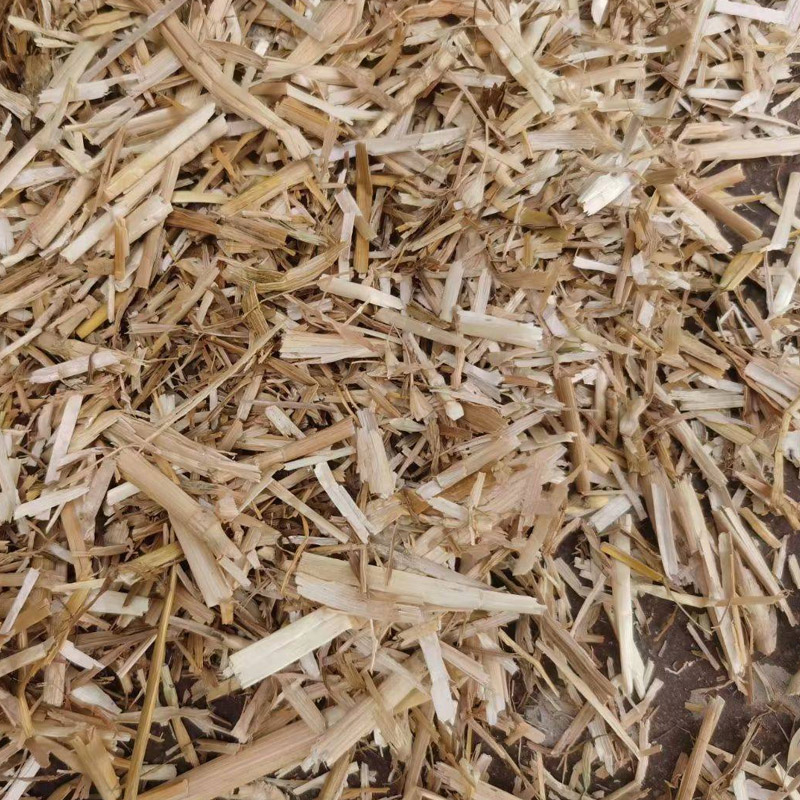Because the broiler chicken breeding cycle is short, deep litter system (floor raising system) has gradually become a popular broiler raising model. The following is an introduction to the selection method of litter material.
1. Types and characteristics of litter materials
The available litter materials mainly include: wood shavings, cut wheat straw or rice straw, rice husk, sawdust, etc.
The characteristics of various litter materials are as follows: sawdust has a lot of dust and may be eaten by chickens, so it should not be used; wheat straw or rice straw is easy to clump, is not loose, and is prone to mold; rice husk is easy to clump and loose, but has poor hygroscopicity and is also prone to mold. It may be eaten by chickens, so it is best to mix it with other litter materials; the shavings are loose and non-clumping, and have good hygroscopicity and biodegradability, so they are better litter materials.

2. Principles for selecting litter materials
The selected litter should be dilute, loose, clean, hygroscopic, low dust, pollution-free, biodegradable, and have reliable biosafety guarantees. Litter should be easily purchased, responsibly sourced and inexpensive.

3. Litter management during brooding period
The focus of litter management during the brooding period is: litter disinfection, litter thickness and flatness, litter temperature and humidity control, etc.
(1) Disinfection of litter
Litter should be disinfected and kept clean and hygienic. Avoid using litter that is moldy, spoiled, contaminated and caked. At the same time, the litter should be turned and changed frequently to prevent moisture. Before entering the chickens, the litter should be monitored for bacteria and mold, and any items exceeding the standards should be banned.
(2)Thickness and smoothness of the litter
The recommended thickness of litter for 1-day-old is 5 to 7 cm. Wood shavings or rice husk 6 kg/m2, crushed wheat straw 1.25 kg/m2. When using wood shavings as litter material, they should be spread evenly by 5 to 7 cm. If the temperature of the chicken house can reach 28-30 ℃, the thickness of the litter can be appropriately reduced. The litter should be laid on dry ground and evenly laid.
The litter should be flat. Uneven litter will restrict the chicks’ feed and drinking water, and affect the growth, development and uniformity of the breeder chickens. Uneven litter will cause uneven ground temperature, causing chicks to crowd into sunken areas, making it difficult for chicks to find feed and water. Keep litter evenly distributed. Usually there is less litter in the brightest place, because the bright light spots increase the activity of the chickens and the litter is removed. Where there is less litter, there is more chicken manure, resulting in less litter around it.

(3) Pay attention to the early litter temperature
Litter temperature is far more important than air temperature in maintaining chick health and performance. Wet litter and causing cold stress in chickens does not only occur in the cold season, but similar problems can also occur in summer. It is recommended that the litter temperature during the brooding period should reach 32°C in the first week and 29°C in the second week.
Depending on climate conditions, litter conditions and seasonal changes, the chicken house needs to be pre-warmed 24 to 72 hours in advance to ensure that the litter temperature reaches about 32°C before the chickens are introduced. Breeding chickens should be avoided on cold-tide litter. Pay attention to the difference in temperature between the upper and lower parts of the house. Generally speaking, the difference between the air temperature at the ground and the temperature at 60 cm is 2 to 4 °C.
(4) Litter humidity
Control it at 10% for the first 3 days of brooding and 25% thereafter.
